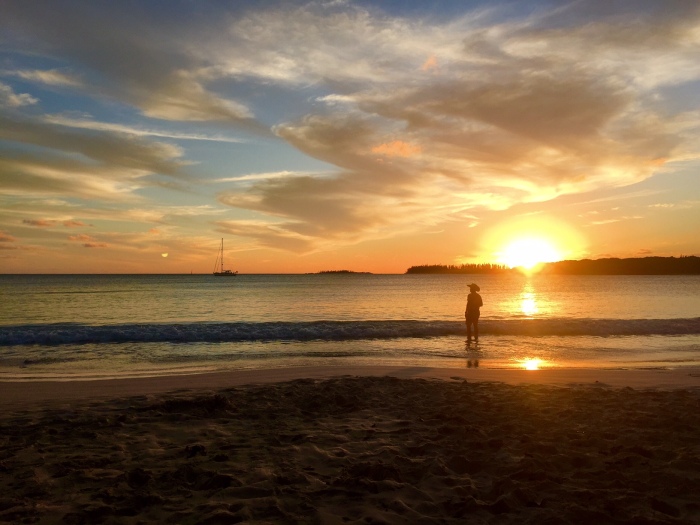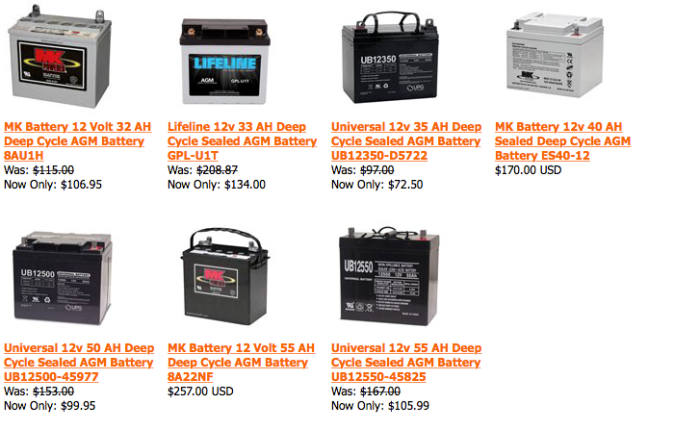How much power do you use?
It is not normally something we would even usually think about in a house. You come home, turn on all the lights, the heat pump, start cooking in the oven, use hot water in the shower, blow dry your hair, put your dishes in the dishwasher, turn on the stereo/TV, start charging your phone/laptop/ iPad, and throw your clothes in the washing machine, without giving any of that a second thought.
However on a yacht that all changes. Once you are unplugged from shore power at a marina (if you are lucky enough to be in a marina berth in the first place) then you have to be self sufficient, and that means producing your own power!
You will remember from the previous post that boats have batteries. Generally one for starting the motor and then at least another one or more for running all the house-related systems.
How many batteries you have will depend on how much power you use, and also what facilities you then need for charging up your batteries. So its a good idea to figure out how much power you use so you can make sure that you have got a system that is going to work well for your boat.
Sizing your battery bank correctly is critical to the performance of your house batteries. Too little capacity can mean systems failure, poor battery performance and shortened battery life. Excessive capacity results in unnecessary weight, cost, maintenance and space.

Step 1 – Make a List of all your power consuming things on board
Here are some ideas:
- RADAR
- Plotter
- GPS
- Fish-finder
- Navigation lights
- Interior lights
- Fans
- Navigation computer
- Cellphone charger
- Tablet or iPad charger
- Gas detector and solenoid controller
- AIS
- Windlass
- Bilge pump
- VHF radio (2 values transmit and receive)
- SSB Radio (2 values transmit and receive)
- TV
- Stereo
- Autopilot
- Wind Instruments
- Remote displays for instruments
- Fridge
- Freezer
- Microwave
- Washing machine
- Shower pump
- Macerator pump
- Water heater
- Heater
- Watermaker
- Galley water pump
Step 2 – How much Power do those things use?
You might either be able to find the details listed on the product, on the instructions, or on the internet. Its worth checking your particular brand/make and model to get an accurate result and even when you are shopping for things you might like to do a comparison of different brands to get the most power efficient thing. For example LED lights use a LOT less power than normal lights.
Step 3 – How long do you use these things for each day?
You will need to think about whether you are on a passage or on anchor, as you will have different power requirements for both.
For example you will be more likely to use your auto helm while you are on a passage, but not at anchor, and you will be more likely to use your anchor light when you are anchored and not on a passage – and so on.
Also take in to account the weather conditions – are you going to be in a hot climate then things like the fridge will be working harder to keep things cool, you might be drinking more cold drinks and using electric fans perhaps. Will you have guests on board on a regular basis? Will this also affect the amount of power you consume?

Step 4 – Make a Table
List all your loads in the first column, the amps they use per hour, the time you will use them on a passage and on anchor and then multiply those amps by the hours to work out your daily consumption.
Because the battery capacity is expressed in Ampere/hours we need to convert any wattage figures into amps of load. This is simply done by dividing the watts by the system voltage. For example a 12 volt 100 watt spotlight consumes 8.5 amps.
100 watts divided by 12 volts equals 8.5 amps
Click here for a refresher on “What’s a watt?”
| Time used | Daily Consumption | ||||
| Amps | On Passage | On Anchor | On Passage | On Anchor | |
| Chart plotter | 2 | 6 | 6 | 12 | 12 |
| GPS | 0.2 | 24 | 4.8 | 0 | |
| Instruments | 0.4 | 24 | 9.6 | 0 | |
| RADAR (Tx) | 3.2 | 3 | 9.6 | 0 | |
| RADAR (Standby) | 1.4 | 9 | 12.6 | 0 | |
| Navigation Lights | 1 | 12 | 12 | 0 | |
| Anchor light | 0.5 | 0 | 12 | 0 | 6 |
| Interior lights | 2 | 1 | 5 | 2 | 10 |
| Spreader lights | 1 | 0.25 | 0.25 | 0.25 | 0.25 |
| Depth Sounder | 0.5 | 24 | 12 | 0 | |
| Stereo | 1 | 2 | 8 | 2 | 8 |
| Fridge | 1.2 | 24 | 24 | 28.8 | 28.8 |
| VHF radio (tx) | 4 | 0.1 | 0.1 | 0.4 | 0.4 |
| VHF radio (rx) | 1 | 23.9 | 23.9 | 23.9 | 23.9 |
| AIS | 0.21 | 24 | 24 | 5.04 | 5.04 |
| Bilge pump | 5 | 0 | 0 | ||
| Water pump | 10 | 0.25 | 0.25 | 2.5 | 2.5 |
| Toilet pump | 10 | 0.1 | 0.1 | 1 | 1 |
| Windlass | 100 | 0 | 0 | ||
| Autohelm | 1 | 0 | 0 | ||
| TOTAL | 132.90 | 97.89 | |||
Don’t worry about the windlass on this table – as you will generally only use this when the motor is running – so it won’t be directly sucking all those amps out of the battery.
PS. don’t just take my word for it in the table above – that is a really rough estimate and different boats will have very different systems. Dig out all the relevant power consuming items on your boat and work it out properly.
Some comments from my friend Alan: The Fridge power consumption is perhaps a little low for running, but probably about right for a 24hr period. The little compressor types use about 5 to 6A, but also remember that it cycles. So the amount of time it runs for depends on the insulation around the Fridge/Freezer and how often you open the thing. Plus it is always best to pre Cool/Freeze food at home before you put it in the Boat unit. The largest amount of energy consumed is in bringing foods down to temp.
Step 5 – Work out your battery capacity
The minimum battery capacity is 3 times the greatest of the two consumption columns – so in this case 3 x 132.90 = 398.7 Ah
This is because with normal batteries you can only get 30% of the capacity out of them if you are going by the 50%-80% rule of thumb. For more about that – check out my post on batteries.
Basically if you regularly discharge your lead acid batteries below 50% of capacity this can result in a disproportionate reduction in life.
It is easy to charge a battery quickly back up to 85% of it’s capacity, but the final 15% required to get them up to 100% has to be trickled back in at a low current over a longer period of time.
So because of that, you can really only use that 30% of the battery capacity (the bit between 50% & 80%) so therefore you want a battery bank with a capacity of 3 times the daily usage.

Step 6 – How are you going to fill your batteries up?
So now you know how much power you are typically drawing out of the batteries either at anchor or on a passage, and you have sized your battery capacity properly.
Another thing you need to consider now is how you are going to charge them up. This can be done via your engine alternator, solar power, wind power, water and shore power.
We will talk more about this in the next post.



Nice artical Viki, I feel a book coming…. I found it was great to share this stuff with the kids, I had Alex aged 12 advising us to remove the halogen bulbs and replace for LED, we would work out how much reading time we had at night and the solar recharge times needed, we had a radio connected directly to one solar panel, it played music every time the sun came out and went off when it clouded over, great educational fun!
LikeLiked by 1 person
Thanks Dudley! I don’t feel like much of an expert yet but maybe one day!
Great fun for your kids to be able to learn that stuff first hand.
LikeLike
Power always an ongoing source of frustration … you prepare with solar panel …. you didn’t angle them to receive their full potential ahhh – wind generator … no wind & or too noisy to sleep at night ahhh – should have bought the expensive one after altering position, changing blades etc lol … challenges … after countless boats … maybe our last one will be perfect 🤓🍷😘 great post 👍
LikeLike
Frustrating isn’t it! I am hoping technology will sort some of those issues out soon. It seems like solar technology has come a long way in the last few years.
LikeLiked by 1 person
Hi Viki, nice article. We did the same energy calculation for our Moody 425, but broke it down for coastal cruising and passage making, quite different from an energy perspective. We also worked out the size of our solar panels to suit. Thought it maybe useful..
https://ayachtmoretolife.com/techncial/
LikeLike
Thanks so much Rich! It’s great to see some real examples. I’ll check it out. 🙂
LikeLike
Pingback: The Ultimate Boating Spreadsheet | Astrolabe Sailing
Great example of a power budget! We will be working these things up as we fit out our boat next month!
LikeLiked by 1 person
Just checking out your lovely website Cally! Would be great to meet up with you somewhere along our travels! Enjoy! 🙂
LikeLike
Pingback: Marine Electronics – Charging your Batteries | Astrolabe Sailing